Peanut Cactus Care: A Guide to Growing Echinopsis chamaecereus
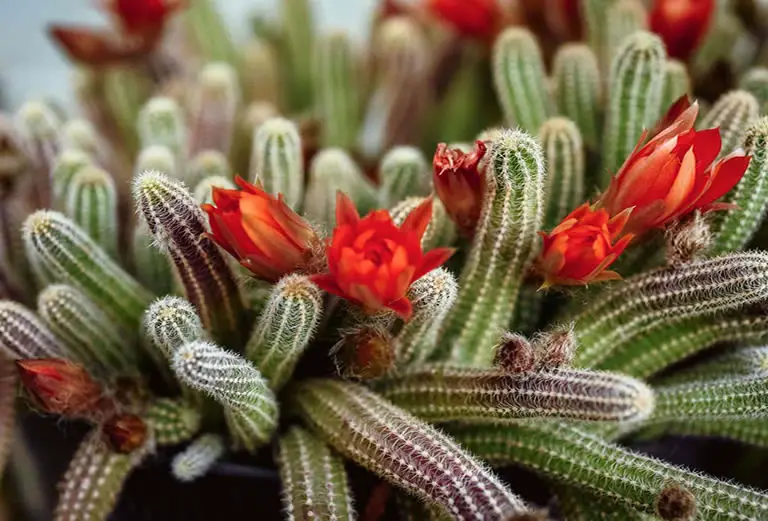
The Peanut Cactus (Echinopsis chamaecereus) is a charming, low-growing cactus native to the mountainous regions of Argentina. Its name derives from its finger-like stems that resemble unshelled peanuts. This cactus is known for its vibrant orange-red blooms and its tendency to form dense clusters, making it a favorite among succulent enthusiasts.
Table of Contents
Light Requirements
Peanut Cactus thrives in bright, indirect sunlight.
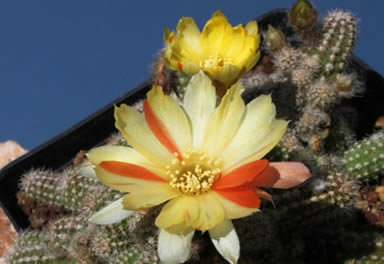
While it can tolerate some direct sun, especially in the morning, prolonged exposure to intense afternoon sun can cause sunburn.
If grown indoors, place it near a south or east-facing window where it can receive ample light without the risk of scorching.
Watering Instructions
Being a drought-tolerant plant, the Peanut Cactus prefers infrequent watering.
Allow the soil to dry out completely between waterings.
Overwatering can lead to root rot, a common issue with cacti.
During the active growing season (spring and summer), water moderately.
In the dormant period (fall and winter), reduce watering significantly.
Soil and Potting
A well-draining soil mix is crucial for the health of the Peanut Cactus.
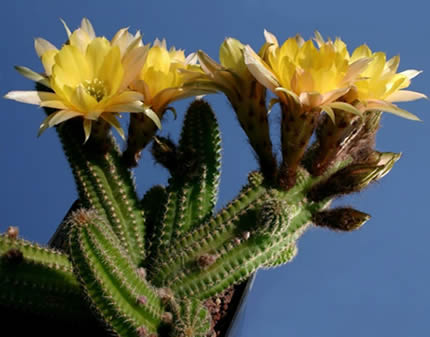
Use a cactus or succulent-specific potting mix, or create your own by combining regular potting soil with coarse sand or perlite.
Ensure the pot has drainage holes to prevent water accumulation.
Fertilizer
Feed the Peanut Cactus with a diluted cactus fertilizer once a month during the growing season.
Avoid fertilizing during the dormant period.
Over-fertilization can harm the plant, so it’s better to underfeed than overfeed.
Pruning and Maintenance
Pruning is generally not necessary for the Peanut Cactus.
However, removing dead or damaged stems can promote healthier growth.
Handle with care, as the stems are delicate and can break easily.
Consider using healthy stems to grow new plants as outlined in the article How to Propagate Peanut Cactus (Echinopsis chamaecereus): A Simple Guide to Expanding Your Collection.
Best Spot in the Home
Place the Peanut Cactus in a location that receives bright, indirect light.
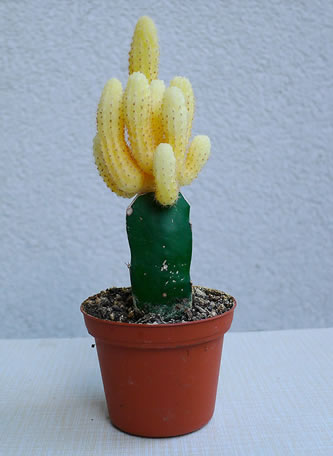
A windowsill with filtered sunlight is ideal.
Ensure good air circulation around the plant to prevent fungal issues.
Outdoor Care
In warmer climates (USDA zones 10-11), the Peanut Cactus can be grown outdoors year-round.
Choose a spot with partial shade to protect it from intense afternoon sun.
In cooler regions, it can be placed outdoors during the summer months but should be brought indoors before the first frost.
Common Problems and Fixes
-
Root Rot: Caused by overwatering or poor drainage. Ensure the soil dries out completely between waterings and that the pot has adequate drainage.
-
Sunburn: Appears as discolored patches on the stems. Move the plant to a location with filtered sunlight.
-
Pests: Watch for mealybugs and spider mites. Treat infestations with insecticidal soap or neem oil.
Popular Peanut Cactus Varieties
Several Peanut Cactus varieties are popular among gardeners and frequently featured on platforms like Pinterest:
-
Echinopsis chamaecereus ‘Lutea’: Known for its striking yellow stems, this variety adds a splash of color to any collection.
-
Chamaelobivia ‘Rose Quartz’: A hybrid with beautiful pink blooms, combining traits of Chamaecereus and Lobivia.
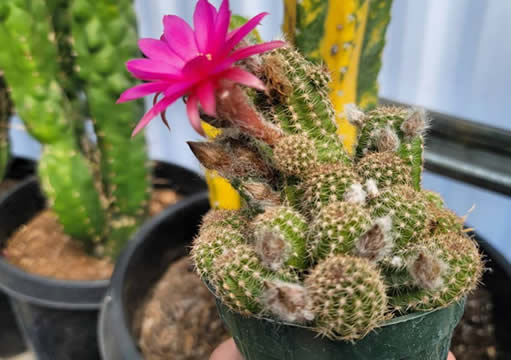
Chamaelobivia Rose Quartz Peanut Cactus -
Chamaelobivia ‘Yellow Bird’: Features vibrant yellow flowers and is appreciated for its prolific blooming.
-
Chamaelobivia ‘Arlequin’: Noted for its multicolored flowers, adding a unique touch to succulent arrangements.
These varieties are celebrated for their unique colors and forms, making them highly sought after by enthusiasts.
Final Thoughts
The Peanut Cactus is a delightful addition to any succulent collection, offering vibrant blooms and an interesting growth habit.
With proper care, it can thrive both indoors and outdoors, providing visual interest and a touch of the exotic.
Thanks for reading! I'm Michael — houseplant fanatic and your Pinterest plant guide.
Follow me on Pinterest for fresh updates 🌿



